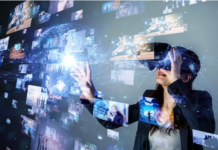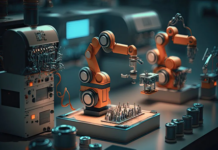
New innovations constantly change the way users interact with mobile devices. Anything from tweaks to UX design to innovative iOS mobile application development in London, San Francisco, or elsewhere can have a major impact on the industry.
Augmented reality is one of the more noteworthy developments in recent years. Made popular by apps such as Pokemon Go! and Snapchat, AR has many potential applications across a wide range of industries. It may also serve as a stepping stone to virtual reality. AR can essentially introduce users to virtual experiences as VR tech becomes more consumer-friendly.
Understanding Augmented Reality
AR basically involves superimposing virtual elements (images, sounds, etc.) onto the real world and allowing users to interact with them via mobile devices. For example, Pokemon Go! displays virtual Pokemon inhabiting the real world when viewed through a smartphone screen.
That doesn’t mean AR is only useful in gaming. To better understand its potential, consider the following applications:
Enhancing Driver Safety
Drivers are now bombarded with more information than ever. Along with basic information such as current speed, drivers are now alerted to text messages, phone calls, when the GPS identifies an upcoming exit, and more. AR can make drivers safer by transparently displaying this information on the windshield.
Automotive design will also benefit from the rise of AR. With AR, design teams can visualize their projects more effectively than ever before. This helps them identify potential flaws before manufacturing a prototype. Ford has already experimented with using AR in this capacity.
Improving Manufacturing
Employees of manufacturing plants must often refer to instructions when assembling complicated items. This distracts them from their immediate tasks.
AR will change that. With AR instructions, employees can see how to assemble various items without looking away from them. The fact that AR solutions are becoming increasingly commonplace at events like the International Manufacturing Technology Show indicates businesses in this industry appreciate the potential advantages AR can offer.
Improving Healthcare
Healthcare is another industry where AR has already demonstrated its value. Researchers from Imperial College London at St. Mary’s Hospital recently used AR to superimpose CT scan images over patient limbs during surgery. This helped surgeons essentially “see through” various tissues, making surgical procedures much easier. Such results will convince more healthcare providers to embrace the technology.
Boosting Military Efficiency
AR can prove useful in military operations by displaying data collected via drones and satellites onto headsets worn by soldiers. This helps them safely and efficiently navigate their surroundings.
Additionally, the U.S. Army is beginning to develop AR training programs to help soldiers more effectively prepare for various situations they might find themselves in.
These examples demonstrate just a few of the ways AR will revolutionize various fields and industries. It also has potential applications in retail, banking, education, and much more. Organizations who experiment with the technology sooner rather than later will be most likely to benefit.
 Natalie is a graduate of McGill University with a degree in International Development Studies and World Cinemas. Since returning to NYC, she has focused on crafting quality content for the app development industry, with a focus on UX design and use case creation. When she’s not busy writing, you can find her rooting for the New York Rangers, attending concerts, or getting distracted by dogs.
Natalie is a graduate of McGill University with a degree in International Development Studies and World Cinemas. Since returning to NYC, she has focused on crafting quality content for the app development industry, with a focus on UX design and use case creation. When she’s not busy writing, you can find her rooting for the New York Rangers, attending concerts, or getting distracted by dogs.


















